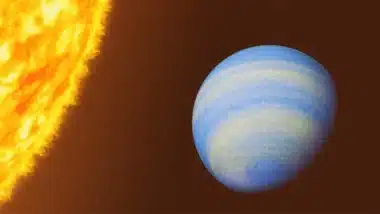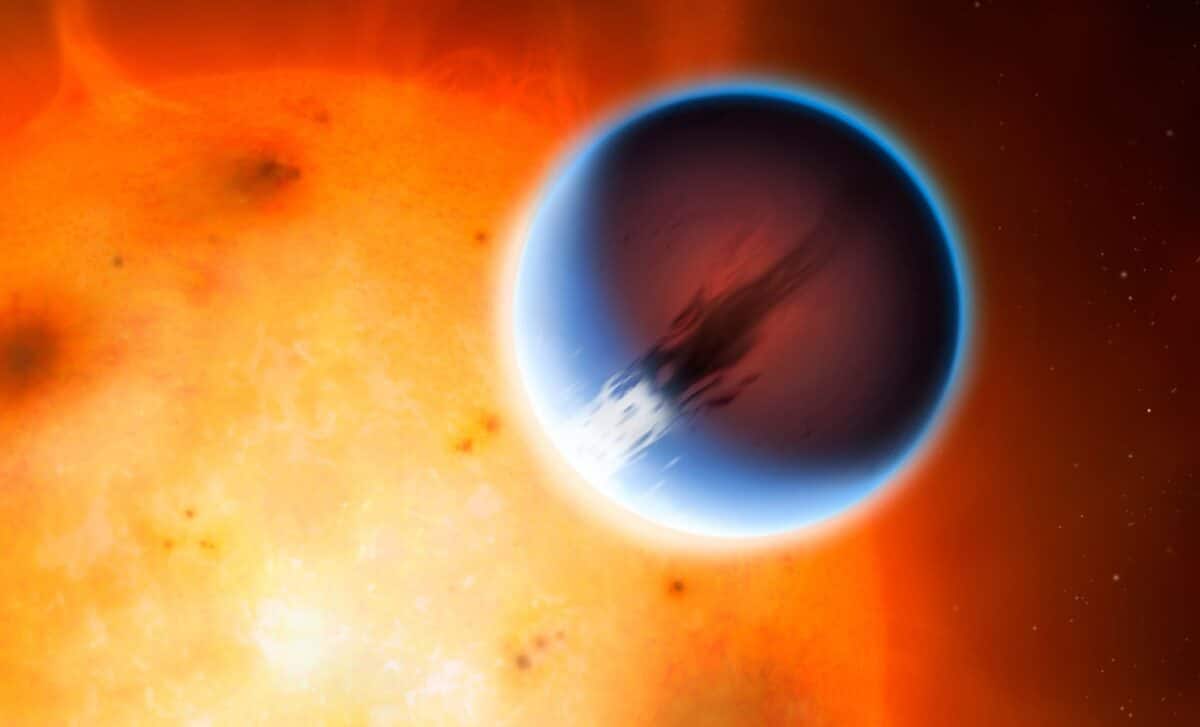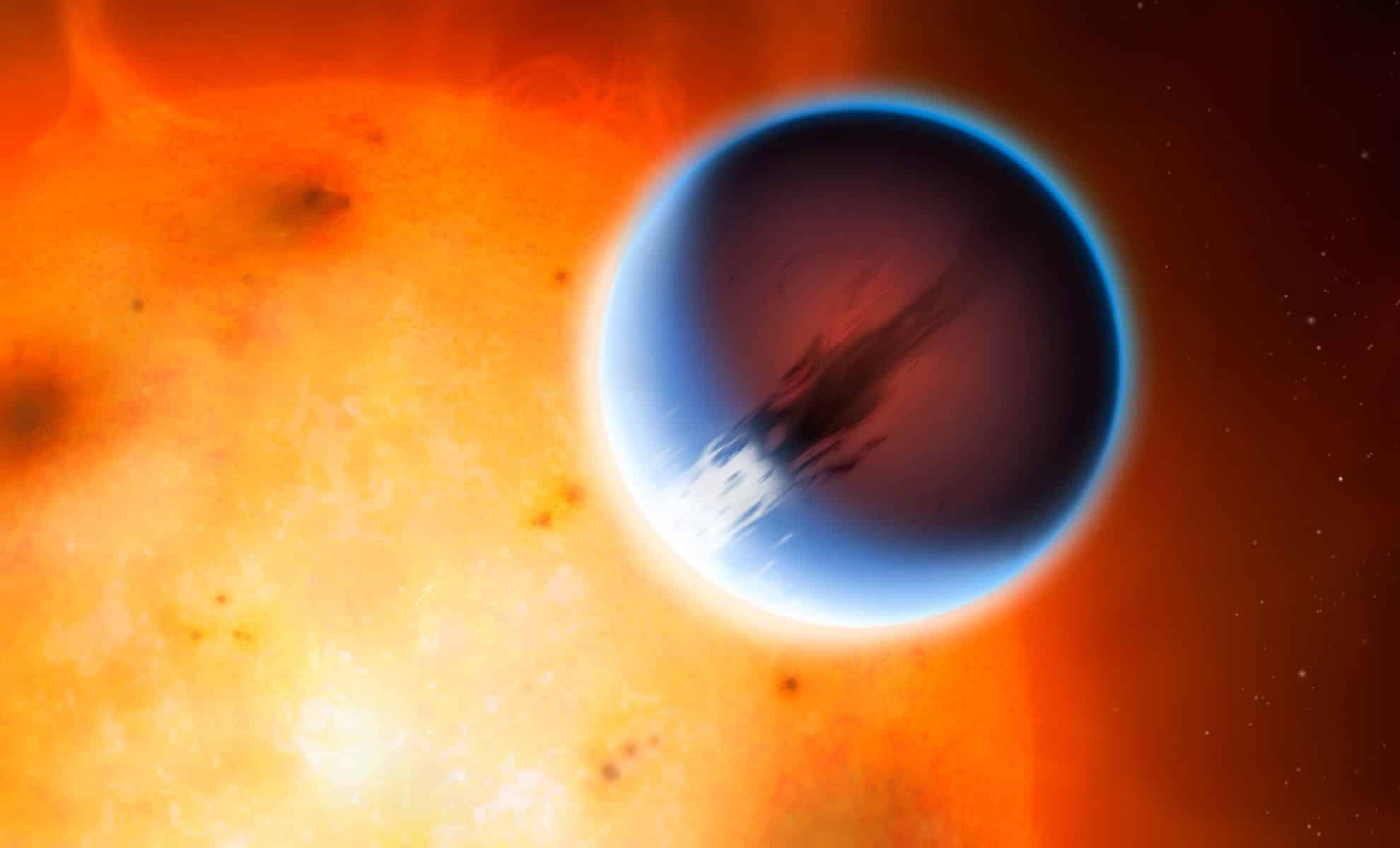Scientists have discovered hydrogen sulfide in the atmosphere of the exoplanet HD 189733b, marking the first detection of this molecule beyond our solar system.
This discovery provides new insights into the atmospheric composition of exoplanets and the role of sulfur in their formation.
Rotten Egg Smell Detected on Distant Exoplanet
The exoplanet HD 189733b, known for its extreme weather conditions including glass rain and high-speed winds, has revealed another intriguing feature: the presence of hydrogen sulfide, which emits a strong sulfuric odor similar to rotten eggs. This molecule was detected using advanced infrared capabilities, enabling astronomers to observe atmospheric components that were previously undetectable.

The research, led by Guangwei Fu from Johns Hopkins University, represents a significant advancement in understanding the chemical makeup of gas giants outside our solar system. Fu explained, "Hydrogen sulfide is a major molecule that we didn't know was there. We predicted it would be, and we know it's in Jupiter, but we hadn't really detected it outside the solar system."
HD 189733b's Characteristics and Mission Details
HD 189733b is classified as a "hot Jupiter," a gas giant similar in composition to Jupiter but with much higher temperatures due to its close proximity to its star. Located about 64 light-years from Earth in the constellation Vulpecula, this planet orbits its star at a distance of only 3 million miles, completing an orbit in just over two Earth days.
The extreme conditions on HD 189733b include temperatures averaging 1,700 degrees Fahrenheit (927 degrees Celsius) and winds reaching 5,000 miles per hour (8,046 kilometers per hour). This close orbit results in a phenomenon where one side of the planet always faces the star, creating a permanent day side with extreme heat and a night side that faces the cold of space.
The JWST's observations revealed not only hydrogen sulfide but also other molecules such as water, carbon dioxide, and carbon monoxide in the planet's atmosphere. These findings suggest that such molecules could be common on other gas giant exoplanets, broadening our understanding of planetary atmospheres. Fu noted, "Hydrogen sulfide is one of the main reservoirs of sulfur within planetary atmospheres. The high precision and infrared capability from the Webb telescope allow us to detect hydrogen sulfide for the first time on exoplanets, which opens a new spectral window into studying exoplanet atmospheric sulfur chemistry."
Significance of the Discovery for Planetary Science
The detection of hydrogen sulfide on HD 189733b is a major breakthrough in exoplanetary science. Sulfur is a crucial element for building more complex molecules, and its presence provides valuable clues about the formation and evolution of planets. By studying the sulfur content and other atmospheric components of exoplanets, scientists can gain insights into their origins and the processes that shape them.
Fu emphasized the importance of sulfur in planetary atmospheres, stating, "Sulfur is a vital element for building more complex molecules, and — like carbon, nitrogen, oxygen, and phosphate — scientists need to study it more to fully understand how planets are made and what they're made of."
The data from JWST not only enhances our knowledge of HD 189733b but also sets a foundation for future studies of other exoplanets. Researchers plan to use the telescope to search for sulfur signatures on additional exoplanets and investigate how the element's concentration varies with distance from the parent star. Fu highlighted the broader implications, saying, "We want to know how these kinds of planets got there, and understanding their atmospheric composition will help us answer that question."
This discovery underscores the potential of the JWST to revolutionize our understanding of exoplanets and their atmospheres, paving the way for more detailed and comprehensive studies of distant worlds. As scientists continue to explore these new frontiers, each finding brings us closer to unraveling the mysteries of planetary formation and the diversity of planetary systems in our galaxy.




